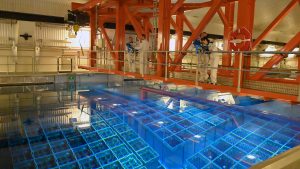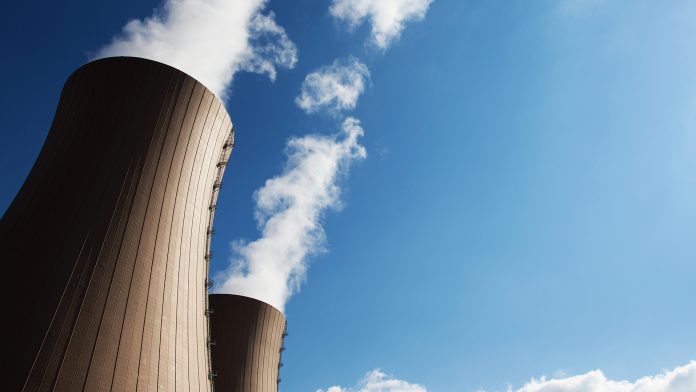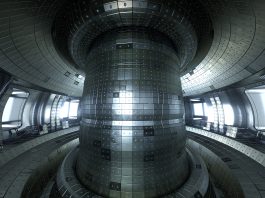Nuclear power, and especially the material from its used fuel can be a subject of concern for many. The Innovation Platform dives a little deeper to see how concerning this material really is.
Nuclear energy is one of the most powerful energy-production methods we currently have. Due to various factors such as their ability to run constantly (unlike some renewable generation methods that rely on, for example, weather conditions), needing less maintenance, and needing less re-fuelling, a nuclear generation plant is able to output twice as much energy as a standard coal generation plant of the same size, due to higher capacity factor.
Yet, despite this immense potential of power, nuclear power faces a series of challenges. One of these issues is that of what to do with the nuclear fuel once it has been exhausted.
The Innovation Platform Assistant Editor, Matt Brundrett, investigates the treatment of used nuclear fuel.
Current methods of managing used fuel
World Nuclear Association (WNA) has established a Sustainable Used Fuel Management Working Group, whose role is to investigate and promote the development of the management of used fuel in a sustainable manner.
They find that, at the moment, there are two key strategies for managing used fuel before its final disposal: Interim storage and reprocessing/recycling.
Interim storage consists of simply storing the spent nuclear fuel safely and securely, either on-site or at a different location, where it will wait to be either disposed of or reprocessed. This method has many different technologies to support it, such as dry storage or spent fuel pools. Every technique for this has its own merits and drawbacks, dependent on the location and policy of the nuclear generation plant.
Reprocessing/recycling is a widely used technique whereby the used nuclear fuel is processed to extract uranium and plutonium. This will then be used to create new nuclear fuel for nuclear generators and can even provide materials for other nuclear applications. This is a popular choice, with sites in North America, Europe, and Asia. While the costs of this can seem high, as the market for nuclear fuel shifts, this may not always be the case.

Of course, reprocessed or not, this will all eventually lead to the final disposal, which is expected to be via deep geological disposal. Facilities for this are under development in Finland and Sweden with others planned elsewhere. Generally, this will be through a facility known as a Deep Geological Repository (DGR). These are simple concepts with complicated executions.
The waste is stored in a repository underground, with the purpose being to prevent radiation from reaching the surface. This means an enormous amount of blocking materials and rock is required, making these far more highly engineered than they may appear on the surface.
Future possibilities
The previously discussed techniques are currently the status-quo, and will likely remain so. Still, while there are very few real complaints about them, that does not mean that there is no room for improvement.
Aaron Erim, the Programme Lead for Recycling, Decommissioning, and Waste at WNA, said: “It’s important to recognise that used nuclear fuel is not waste, and there are opportunities to recycle and re-use as part of a closed fuel cycle, much like other circular economy and sustainability initiatives. For those cases where recycling is not pursued, there are many short- and medium-term solutions already available for handling used nuclear fuel, and long term-disposal options that are close to being operational.”
WNA’s Sustainable Used Fuel Management Working Group lists the following as potential future paths of improvement:
- Advanced technologies for fuel recycling, including multi-recycling of valuable materials, uranium and plutonium in conventional light water reactors, or closed fuel cycle neutron reactors that make better use of natural uranium resources, reducing waste and toxicity
- Other advanced options such as the transmutation of minor actinides show potential to further reduce waste, toxicity, and decay time of waste
- Deep Borehole Repositories are conceptual repositories that, rather than engineering a relatively-close-to-surface repository, will simply be drilled much deeper to prevent the waste from reaching the surface. This technique would drill as much as ten times deeper than the standard DGR, but still need a lot of work to make them feasible
Nuclear power is set for a resurgence
According to WNA, around 60 reactors are under construction globally, with 110 more planned in the near future.
While many people might worry about the safety of the fuel used, and its disposal, the truth is that there is very little to worry about. The science, engineering, and practice of safe reprocessing and disposal is well developed, and the potential advancements can only make them safer.
Aspects such as this is why, coupled with renewable energy production plants, nuclear power will most likely prove critical to the transition to a more sustainable future in terms of power generation.
References
- WNA | Used Fuel is Not an Obstacle to Nuclear Power
- Power Technology | Global nuclear power faces unprecedented challenges
- GOV.UK | Geological Disposal – a programme like no other
- Ars Technica | Could deep boreholes solve our nuclear waste problem?
- WNA | Plans For New Reactors Worldwide
Please note, this article will also appear in the 18th edition of our quarterly publication.









